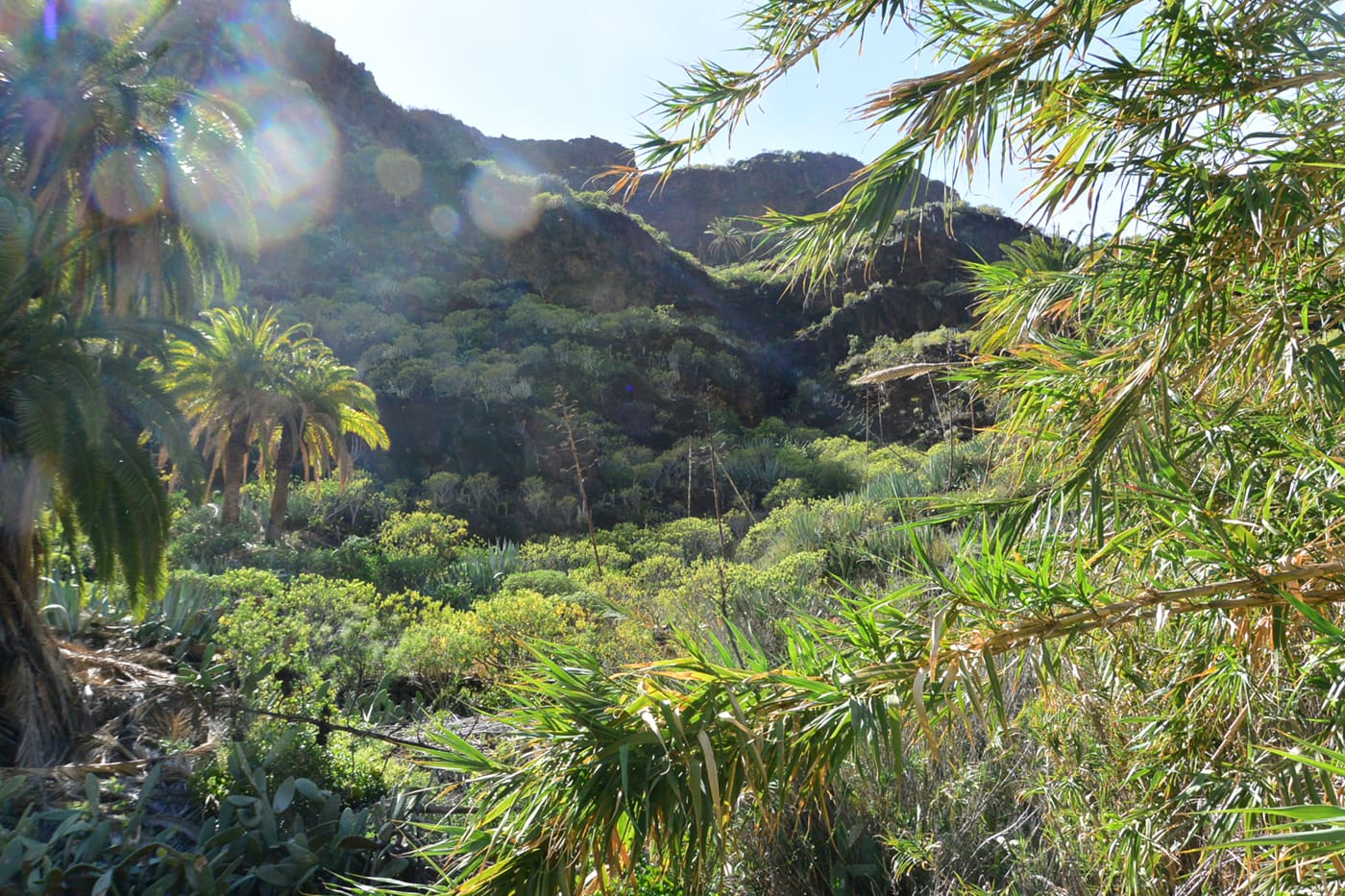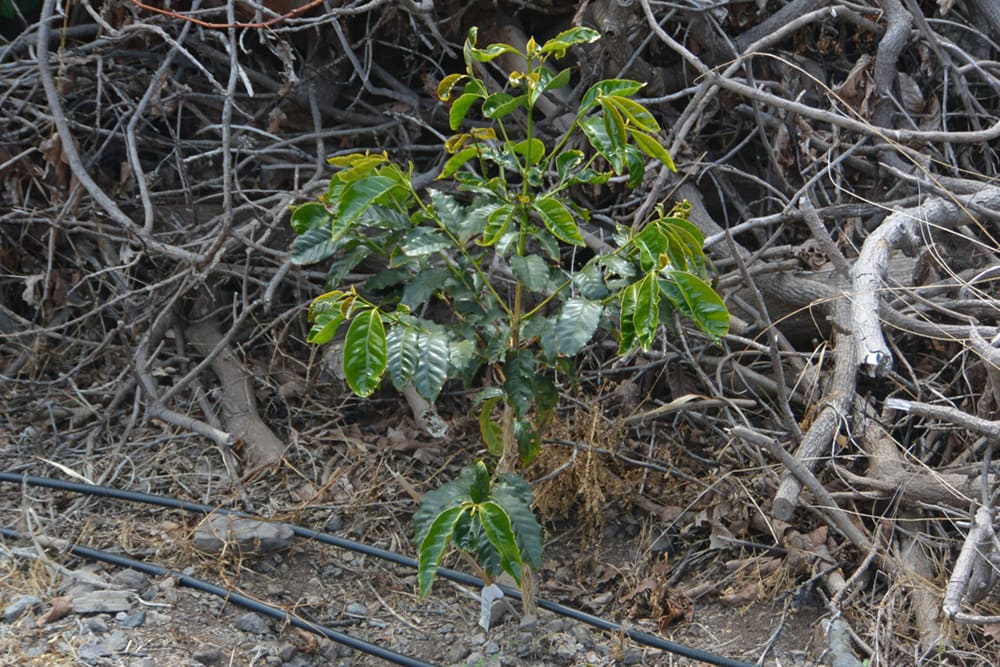Basically, thinking of Hawaii, it was kind of obvious that coffee would simply have to grow in the volcanic soils of Gomera. Yet people looked at us quite strangely when we discussed it with them, islanders and mainland Spaniards. Later we realized why: they all knew it was possible, because practically all their grandparents had coffee bushes in the garden, where they would pick some cherries, pit them, roast the beans in a pan, grind them into powder, and then pour the whole thing into a pot with hot water.
Coffee on the island

They knew that. But they also knew that the history of agricultural labor in Gomera is a history of disasters, of meanness, of a kind of slave labor, of catastrophes, of infamy and of exploitation hidden behind religion, so they thought: Let them come first, those Germans, we’ll see the results when they have to get to work.
They did get to work.
And now, after almost seven years, we can say: Aha. It was worth it, for the plants, for parts of the island’s valleys, and probably also for the people. But it was a long way.
First we had to find coffee plants. They actually existed, found on winding paths, as tiny sprouts that then appeared somewhat timidly in little cardboard boxes.
Then we had to find people who had done this before. Funnily enough, they were around, as it turned out that Gomera since Columbus actually outsources parts of its inhabitants to South and Central America, to Honduras, Nicaragua, Mexico, Venezuela and many more countries, so that every Gomero family has at least one cousin over there. Often the other way around: the family is over there, the cousins are here. Since under Franco it was forbidden for islanders to leave the Canary Islands, but anyway they did, and so Venezuela was even called “the eighth island” here. And what do they grow over there? Coffee.
Then we had to find people who wanted to start this again with us. And suddenly there were those, too. And we learned that someone who looks like a landowner is not necessarily one, and someone who comes by bus can be one. And that on the other hand everything can be as it seems.
Then we had to learn that not everyone is well-disposed towards us, and that these are really nasty pests in particular. Because not only we appreciate the climate here, but basically everything that lives, if it doesn’t want to live in Norway. And who wants to do that?
Then we had to realize that it is only one thing to make the coffee blossom, grow and flourish – the other is to harvest it and continue to grow it: Harvesting it and processing it. Of course we know roughly how to process coffee, we get prizes for it from time to time, but on the island it was a different story.
Then, last but not least, we had to look into our wallets from time to time, and realize that you can also recognize adventures by the fact that they are expensive – and sometimes unpredictable. And so we came to the conclusion that it would be a good idea if we import our best coffees, roasted in Germany, to Gomera (directly called madness by good merchant colleagues) and then sell them here, namely to support the local work.
Then, also not easy to do, we had to make contracts, with all involved, so that also all knew that there is a big difference between the old slaveholders and us.
And then, last but not least, we had to start looking for people who simply wanted to support the project: You. With work, with pleasure, with the purchase of the existing coffees, with time, with idleness and enthusiasm – with ideas, with everything you would like to contribute.
Because one thing can be said: what is being created here is indeed not only a very unusual coffee, but also a very unusual human project. And right in the middle of Europe. Well, okay – but in Europe, after all.

